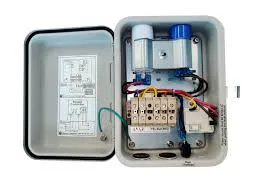How to Use Self-Amalgamating Tape A Comprehensive Guide
Self-amalgamating tape, also known as self-fusing tape, is a versatile and innovative product that has gained popularity in various applications ranging from electrical insulation to automotive repairs. Unlike traditional adhesive tapes, self-amalgamating tape adheres to itself when wrapped tightly, forming a solid, waterproof, and insulating bond. This article will guide you through the process of using self-amalgamating tape effectively.
Understanding Self-Amalgamating Tape
Before diving into the application process, it’s important to understand what self-amalgamating tape is made of and its properties. Typically made from silicone or rubber, this tape does not have a sticky side as regular adhesive tapes do. Instead, it is designed to fuse to itself when wrapped around surfaces, creating a durable and airtight seal. Its excellent electrical insulation properties make it ideal for electrical repairs, while its flexibility and high-temperature resistance make it suitable for various environments.
Applications of Self-Amalgamating Tape
Self-amalgamating tape can be used in a wide range of applications, including
1. Electrical Insulation It is commonly used in electrical repairs to insulate wires and connections, protecting them from moisture and environmental damage. 2. Automotive Repairs Mechanics often use it to make temporary fixes to hoses and wiring, especially in emergency situations. 3. Outdoor Gear Repair Whether it’s a leaky tent or a damaged fishing rod, this tape can provide a quick and effective solution. 4. Plumbing It can seal leaks in pipes, providing an immediate fix until a permanent solution can be implemented.
How to Use Self-Amalgamating Tape
Using self-amalgamating tape is a straightforward process, but following proper techniques ensures the best results. Here are the steps to follow
Step 1 Prepare the Surface
Before applying the tape, clean the surface where you will be applying it. Remove dirt, grease, and any other contaminants. For electrical applications, ensure that the power is turned off and the area is dry to prevent any electrical hazards.
Step 2 Measure and Cut
Determine how much tape you will need for your application. It’s better to have a little more than you think you'll need, as you can always trim off excess later. Cut the tape with scissors; most self-amalgamating tapes can be easily cut without any special tools.
how to use self amalgamating tape

Step 3 Start Wrapping
Begin wrapping the tape around the desired area. It is crucial to stretch the tape as you wrap it, ideally by 50-75% of its original width. This stretching helps activate the self-amalgamating properties of the tape, creating a better seal.
Step 4 Overlap Each Layer
For the best results, overlap each layer of tape by at least 50%. This ensures that there are no gaps and enhances the waterproof and insulating properties of the tape.
Step 5 Finish It Up
Once you have covered the area adequately, press the tape onto itself to complete the seal. Ensure there are no loose ends and that the tape is securely pressed down. The fusing process begins immediately, and after a short period, the tape will begin to amalgamate into a solid, cohesive layer.
Step 6 Allow Time to Cure
Although self-amalgamating tape bonds quickly, it is essential to allow it some time to cure fully before putting it to use. This can vary depending on environmental conditions, but typically, waiting 15 to 30 minutes will suffice for most applications.
Tips for Using Self-Amalgamating Tape
- Temperature Considerations Use the tape within its specified temperature range for optimum performance. Extreme cold or heat may affect its adhesive qualities. - Storage Store leftover tape in a cool, dry place away from direct sunlight to maintain its properties. - Thickness Matters Depending on how much insulation or protection you need, choose a tape with the appropriate thickness.
Conclusion
Self-amalgamating tape is an incredibly handy tool that offers effective solutions for a variety of repair tasks. Whether you're tackling electrical issues, automotive repairs, or home maintenance, knowing how to use this tape efficiently can save you time and money. By following the steps outlined in this guide, you can ensure a strong, reliable seal every time you use self-amalgamating tape. So if you haven’t yet added this versatile tool to your toolkit, it’s time to consider it for your next project!
-
XIANGFAN Rubber Tape-Ultimate Solutions for All Your Insulation NeedsNewsJun.24,2025
-
XIANGFAN Rubber Tape-Protection for Industrial and Residential ApplicationsNewsJun.24,2025
-
XIANGFAN Rubber Tape: Superior Safety and Sealing for Demanding EnvironmentsNewsJun.24,2025
-
XIANGFAN Rubber Tape: Reliable Solutions for Every Electrical ChallengeNewsJun.24,2025
-
XIANGFAN Electrical & Industrial Tape: Powering Reliability Across IndustriesNewsJun.24,2025
-
XIANGFAN Electrical & Industrial Tape: Excellence in Every ApplicationNewsJun.24,2025
